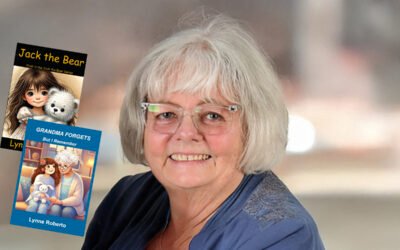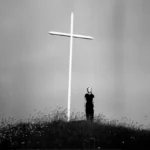Sarah Peters Brings Nature and Letters to Life Through Her Captivating Sculptures

Photo: Sarah Peters with her Botanical Fainting Couch, a masterful blend of botanical artistry and bronze craftsmanship that invites exploration and wonder.
A Fusion of Art, Nature, and Education
Sarah Peters shares the inspiration, challenges, and process behind her Botanical Fainting Couch, blending botanical textures with intricate bronze craftsmanship to create an interactive, educational, and globally resonant work of art.
Sarah Peters is a force of nature in the world of art, a creative powerhouse whose work defies boundaries and sparks curiosity. A Pratt Institute graduate with a lifelong dedication to exploring diverse mediums, Sarah thrives on bold challenges, often transforming intricate concepts into monumental achievements. Her passion for detail and her ability to seamlessly marry science, design, and art are nothing short of extraordinary, setting her apart as a contemporary visionary.
Among her most captivating works is the Botanical Fainting Couch, a masterful bronze sculpture that intertwines the elegance of cursive letters with the natural beauty of botanical textures. This stunning creation is more than just art; it’s an immersive experience inviting viewers to connect with the nuanced language of nature. With every intricate detail, Sarah emphasizes curiosity and education, encouraging viewers to engage with the taxonomy of plants in a way that is both tactile and cerebral. Her collaboration with botanists at Harvard University Herbaria not only underscores her commitment to scientific rigor but also amplifies the universal accessibility of her work.
In this issue of WOWwART, we had the privilege of diving deeper into Sarah’s artistic process, particularly the challenges, revelations, and triumphs behind the creation of her breathtaking Botanical Fainting Couch. Her journey, infused with meticulous craftsmanship and a boundless intellectual curiosity, reminds us why art has the power to move, educate, and inspire. Sarah Peters doesn’t just create sculptures—she offers us new ways of seeing and understanding the world. We invite you to enjoy this in-depth conversation with an artist whose work invites us to pause, wonder, and grow.
What was the inspiration behind the “Botanical Fainting Couch”, and how did you decide to incorporate a taxonomy theme?
My first Alphabet sculpture was for a children’s bookstore. The textures were objects that children could identify, like Animals, Buttons, Coral… Elephant Skin. I thought the plant materials I’d used were the most beautiful, so the next effort was inevitable. I always imagined it at a botanical garden or a university. “Extra credit if you can identify all 26 plants on the Fainting Couch!”
“Extra credit if you can identify all 26 plants on the Fainting Couch!” –Sarah Peters
How did you select specific plant textures for each letter of the alphabet, and what was that process like?
I sought to have diverse plant materials such as evergreen and deciduous trees, annuals, perennials, shrubs, tropicals, legumes, etc. They had to print well, which was down to trial and error. Some plants were more robust in the autumn months or had a brief blooming period, so I’d have to wait for the seasons to change to collect them. I also wanted to cover as many regions as possible. The winners contrasted well with their neighbors, had distinct identifiable characteristics, and ultimately were most pleasing to the eye.
What were some of the main challenges in casting silicon bronze while capturing the delicate details of each plant?
In bronze casting, once the mold is made and fresh casting wax is brushed into the mold, the wax is then cut into strategically shaped pieces before wax spues and gates are attached. These prepped pieces would need to fit into the slurry drums and be manageable by one person. Therefore, cuts had to be made across the plant textures. Once the cast bronze pieces were welded back together they would have to be chased (machined) by hand to resculpt the textures. It was stressful.
In what ways did the plant materials shape or limit the final design of the sculpture?
The plant selection worked itself out organically. Less aggressive textures were needed where people would be seated and sliding their bums across the surface. The shape of the piece was really dictated by the design and flow of the letters. That was quite a puzzle to work out. I hope enough people will still know cursive to identify all of the letters in future decades.
How do you envision viewers interacting with the *Botanical Fainting Couch*, and what responses do you hope it will inspire?
I’ve seen it in action, and the reaction is exactly as I’d hoped. From a distance the viewer sees the loping, almost insect-like form which draws them in. Then, “Oh, wait… Those are letters!” Next they see the textures and have to touch, which leads them to question what’s going on. Usually someone will blurt out, “Pinecone!” or, “That’s a maple leaf.” Then they start looking for answers as to why a maple leaf would be on the letter A (Acer). It’s always displayed with a label and a key, to educate. It was really important to me to use the Latin genus as the identifiers. It’s the language of Taxonomy. This sculpture could go anywhere in the world and be understood.
Could you describe the role of collaboration with botanists at Harvard University Herbaria in achieving scientific accuracy and universal appeal in this piece? I wouldn’t have dared completing this piece without consulting the experts. I was introduced by a friend who was a former graduate student at Harvard. We had a lot of back and forth about which plants to use, because I was still in the specimen gathering/printing phase. I was shown specimens from the vast archives with curvy script labels written with a fountain pen. The biologists helped enormously with the K (Krascheninnikovia), a western plains shrub commonly known as winterfat, and the X (Xanthoria), a yellow lichen. I hunted down the Krascheninnikovia at the Denver Botanical Gardens and brought it home sandwiched between two big sheets of cardboard. The Xanthoria was found locally in Woods Hole, MA, but I had to send a sample to Harvard to be examined under a microscope. They were also the folks who suggested Metasequoia. Harvard has a fossil of it in their collection, as well as a tree growing right outside the Herbaria. I will always be grateful.

The Botanical Fainting Couch
Sarah Peters’ Botanical Fainting Couch is a breathtaking bronze masterpiece that merges art, science, and education into an interactive experience. Expertly crafted, this 96″x50″x48″ bench weaves botanical textures with the alphabet, creating a tactile taxonomy lesson. Its meticulous attention to detail and engaging design captivate audiences while encouraging plant recognition and discovery. Perfectly tailored for public garden spaces, it serves as both a functional sculpture and an educational tool. Peters’ visionary creativity transforms the natural world into a work of art that inspires wonder and learning across all generations.
EDITOR’S HIGHLIGHTS
Empowering Art & Artists Globally
“Being featured in WOWwART means gaining visibility not just in print edition, but across the entire media spectrum in the US, UK, Europe and beyond”

EDITOR’S HIGHLIGHTS
Media, Art and Artist
Media is a powerful tool to build relationships, boost visibility, influence decisions, and create lasting impressions for success and growth.













